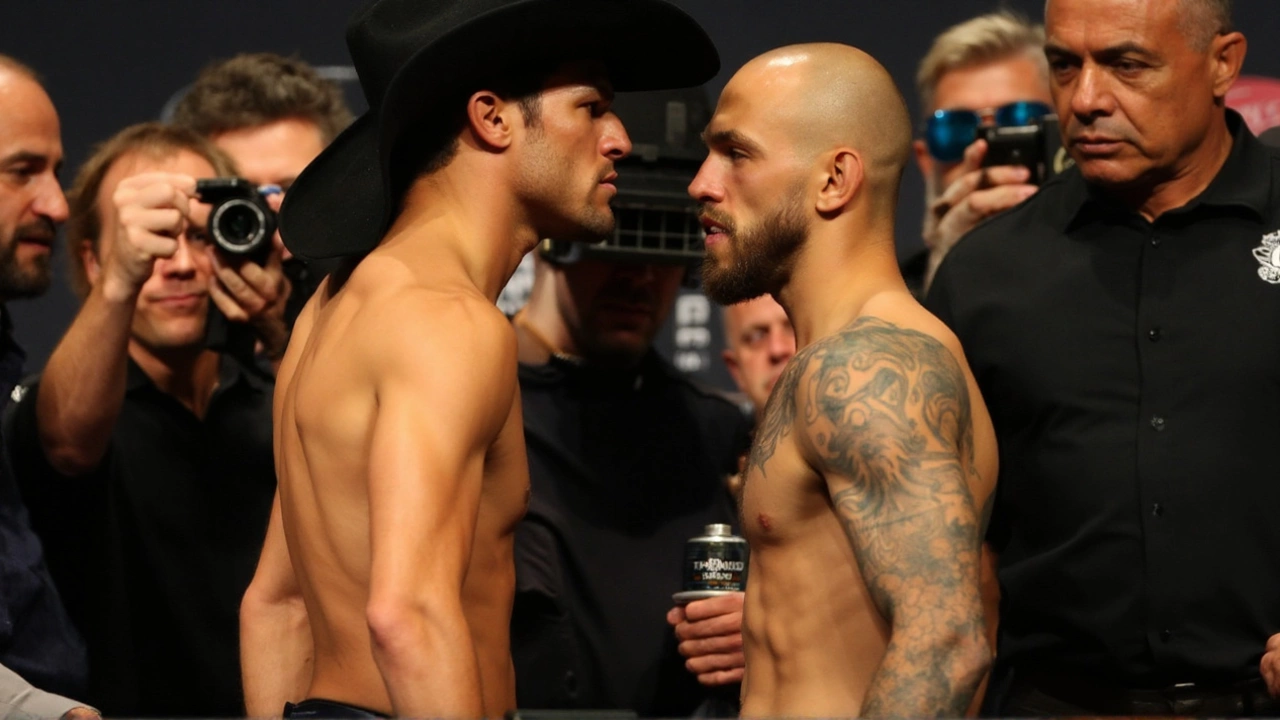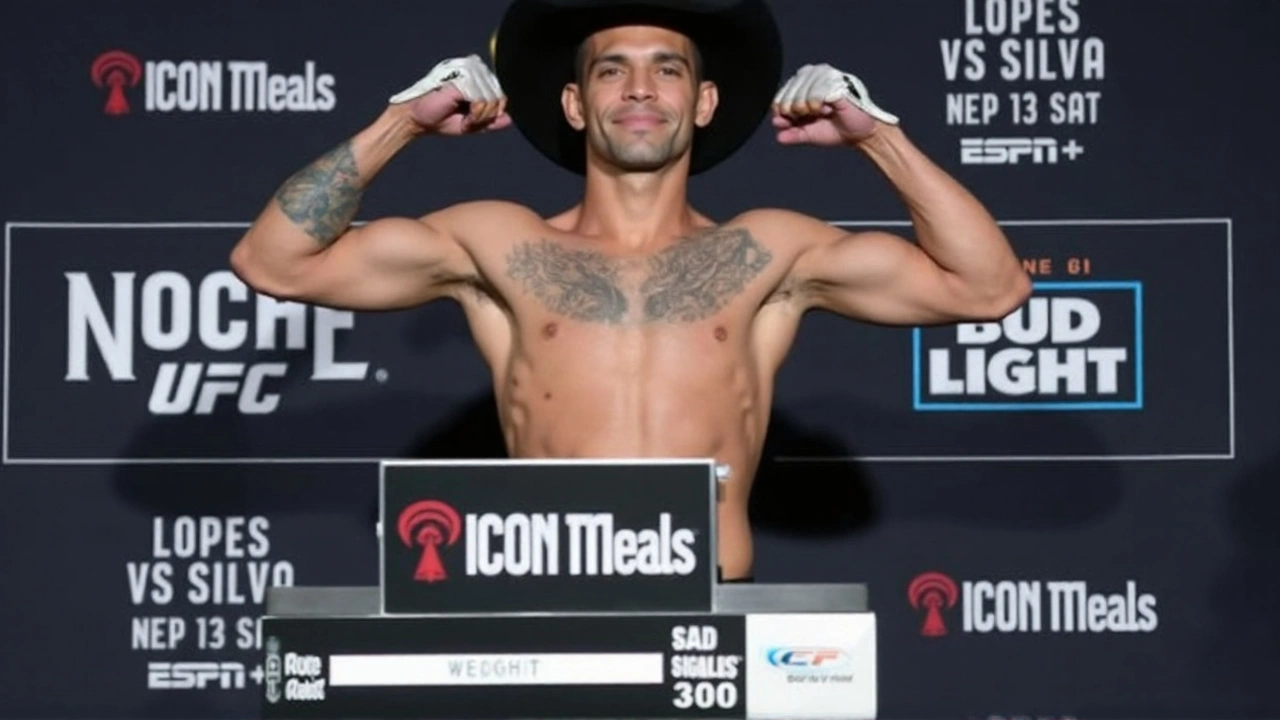San Antonio gets the Noche spotlight: stakes, styles, and the market
The annual Mexican Independence Day showcase left Mexico City and hit San Antonio’s Frost Bank Center with a 14-fight slate and a main event that had real divisional stakes. UFC Noche has always been about pace and pressure, and the San Antonio crowd tends to reward both—loudly. ESPN+ carried the action, with the main card rolling at 6:00 PM ET.
The headliner put Jean Silva, riding a 13-fight win streak and perfect in five UFC appearances, against Diego Lopes, a dangerous grappler-striker coming off a failed title bid against Alexander Volkanovski. Oddsmakers sided with Silva at -260, while Lopes sat at +210, a number that made some bettors pause given Lopes’ five-round seasoning and composure under fire. The total closed at 2.5 rounds with the over favored at -165, signaling expectations of a measured start, plenty of feints, and extended clinch-and-scramble sequences before either man’s power or grappling edge could break through.
Silva’s profile is built on pressure, tight boxing entries, and a quick trigger on the mat—he most recently snatched a submission against Bryce Mitchell at UFC 314, a win that pushed his stock into contender territory. Lopes, meanwhile, is creative and stubborn to put away. He’ll switch looks, use long straight punches to set up level changes, and threaten front chokes and back takes if a scramble breaks loose. Five-round gas matters here. That’s part of why the over drew money; both men can take momentum from long exchanges and neither typically empties the tank early.
The co-main had veteran bantamweight Rob Font hunting a third straight win against David Martinez, a newcomer with momentum from the regional scene and one UFC win in his pocket. Font’s jab, footwork, and built-in experience against ranked names tend to turn wild fights into controlled rounds. Martinez brings speed and a willingness to brawl, but managing Font’s lead hand and denying extended cage time usually separates prospects from main-card regulars at 135 pounds.
Elsewhere, strawweight contender Tatiana Suarez drew Amanda Lemos in a classic wrestler vs. puncher setup. Lemos’ power is real and fast, but Suarez’s top control and chain wrestling gave her a clear path. Books even shaded a submission outcome for Suarez at +155, a nod to how often her rides force exposed necks and desperate scrambles. In the lightweight ranks, Joaquim Silva versus Claudio Puelles paired a sturdy striker with a leg-lock hunter. Puelles’ knee bars are no secret; Silva’s job was to keep the feet moving, punish level changes, and avoid extended half-guard battles. Another lightweight matchup, Carlos Diego Ferreira against Alexander Hernandez, came in as a near pick’em (-110 CDF). One guy prefers layered pressure and back-half pace; the other tries to shock early with speed and bursts. How the first six minutes looked likely told the story.
One more subplot hovered over the whole card: the move from Mexico City’s altitude to sea-level conditions in Texas. Fighters with front-foot styles and high output often look freer at lower elevation, which can subtly push overs on totals and reward cardio-heavy game plans. San Antonio also made sense for the Noche brand—huge Mexican-American fanbase, drivable for many, and a market that shows up for fights.

Actionable betting angles: value, risk, and the props that made sense
If you were building a card-long portfolio, this wasn’t a night to chase double-digit parlays or lay big chalk across the board. The board offered underdog leverage in spots and several method props with favorable prices. Here’s how the values lined up, based on the posted numbers and matchup tendencies.
- Main event total over 2.5 rounds (-165): With both Silva and Lopes comfortable at range and in scrambles, early caution made sense. Lopes just banked five rounds at championship pace against Volkanovski. Silva’s finishing ability is real, but he’s not reckless. The over was the safer way to back a competitive, layered fight.
- Jean Silva moneyline (-260) as parlay glue or small single: If you believed Silva’s pressure plus submission threat would win minutes, the moneyline was the straightforward side. For anyone avoiding chalk, skipping the ML and sticking with the total was a reasonable hedge against an unpredictable grappling exchange.
- Tatiana Suarez by submission (+155): Style-on-style, this prop matched the tape. Suarez stacks control into threats, especially when opponents turn to their knees to stand. Lemos’ power is the danger, but the more minutes on the mat, the better Suarez’s chances to snare a neck.
- Joaquim Silva inside the distance (+275): Puelles is a specialist. If Silva kept his hips back and denied entanglements, his counters and pressure could snowball. That +275 gave you a way to fade extended leg-lock sequences without paying a heavy tax.
- Rob Font by decision (price dependent): Font tends to bank rounds behind the jab and deny long grappling sequences. Martinez is scrappy, and that usually means minutes rather than a clean finish. If the number sat at a plus tag, it was a sensible upgrade from a moneyline.
- Carlos Diego Ferreira moneyline (-110): Near pick’ems come down to reliability. CDF’s ability to win late phases and turn defensive grappling into offense made a slight lean fair, especially if Hernandez couldn’t sustain the early burst past the mid-fight mark.
Bankroll-wise, this was a card to size bets modestly and avoid stacking correlated outcomes. If you played Silva ML and the over, you were essentially backing a measured, control-based main event. Pairing that with Suarez by sub gave you stylistic diversity without piling on massive juice.
Live betting had its place, too. For Silva–Lopes, the first round told you everything about tempo. If Silva found the back or forced long clinches, his ML and sub lines often improved mid-fight without risking the pre-fight price. If Lopes stuffed early shots and kicked the legs cleanly, over tickets aged well and Lopes’ live number usually drifted to a more attractive plus.
One more note on props: Puelles is a classic binary fighter. If you liked him, the submission line often paid better than his ML and matched his real win condition. If you were on Silva, inside-the-distance was your friend, given how exposed Puelles can look if he can’t wrap the leg. With CDF–Hernandez, totals were tricky because Hernandez’s fights swing between fast starts and mid-fight stalls. That’s why the near pick’em side felt safer than guessing the clock.
Big picture, the Noche brand didn’t lose its identity in San Antonio. The matchmakers built action fights with clear stylistic hooks, and the board gave you choices: play safe with totals, chase plus-money methods where the tape lined up, or mix small singles instead of building parlays that crumble on one weird scorecard. However you approached it, this was a night to be selective, price-sensitive, and honest about variance—especially at the top of the bill.
